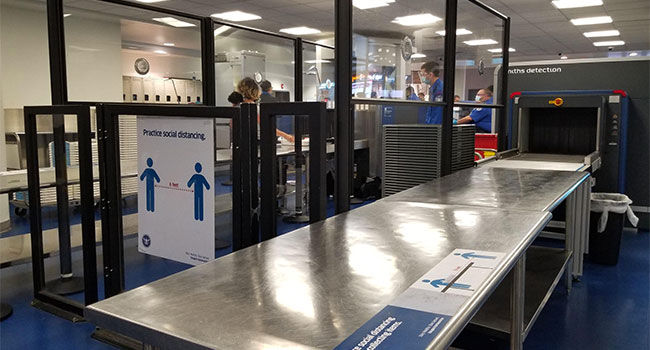
Acrylic Barriers Installed at Charlotte Douglas International Airport
TSA security checkpoints to help protect workforce and passengers from COVID-19
The Transportation Security Administration (TSA) has completed installation of new acrylic barriers at security checkpoints throughout Charlotte Douglas International Airport (CLT) in the agency’s ongoing efforts to prevent the spread of COVID-19.
A total of 26 protective barriers were installed across four CLT checkpoints last week in locations where TSA officers typically interact with passengers, to include the ticket and document
“The addition of acrylic barriers inside TSA checkpoints is one of several measures we’ve taken to protect our workforce and travelers,” said Kevin Frederick, TSA’s federal security director for CLT. “As long as this virus remains a threat, TSA will continue to implement the measures necessary for containment, including acrylic barriers as well as technologies that reduce or eliminate physical contact.”
In addition to the barriers installed inside TSA security checkpoints, airport officials installed barriers in checkpoint queues earlier this summer to promote social distancing.
TSA recently awarded a contract for acrylic barriers and associated equipment for installation at TSA’s security checkpoints at 37 priority airports nationwide.
The contract will provide an additional 1,230 acrylic barriers to augment temporary barriers already installed at various airports and will be completed by early autumn. The contract was awarded in June and additional barrier contracts will be awarded in September for remaining airport locations.
TSA continues to promote its “Stay Healthy. Stay Secure.” campaign designed to advise travelers of airport checkpoint modifications designed to contain the spread of COVID-19. Travelers are reminded to follow the Centers for Disease Control and Prevention (CDC) travel guidance as well as local and state advisories regarding COVID-19.